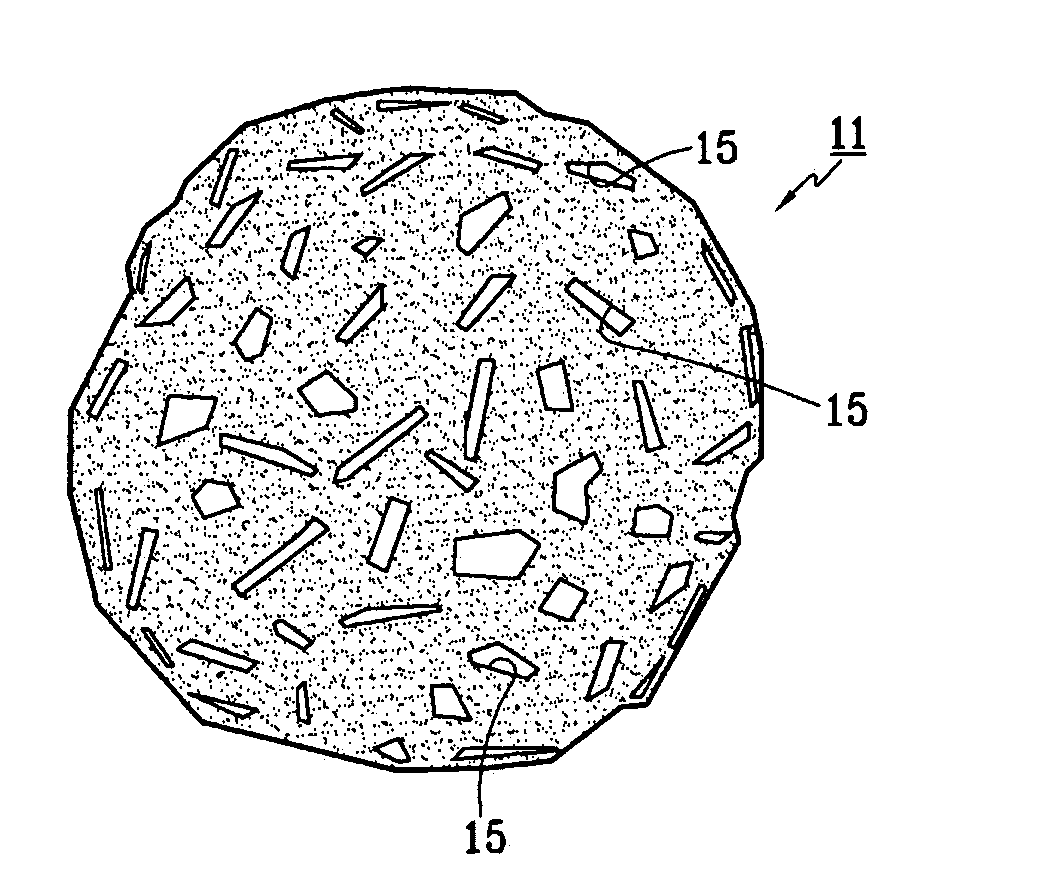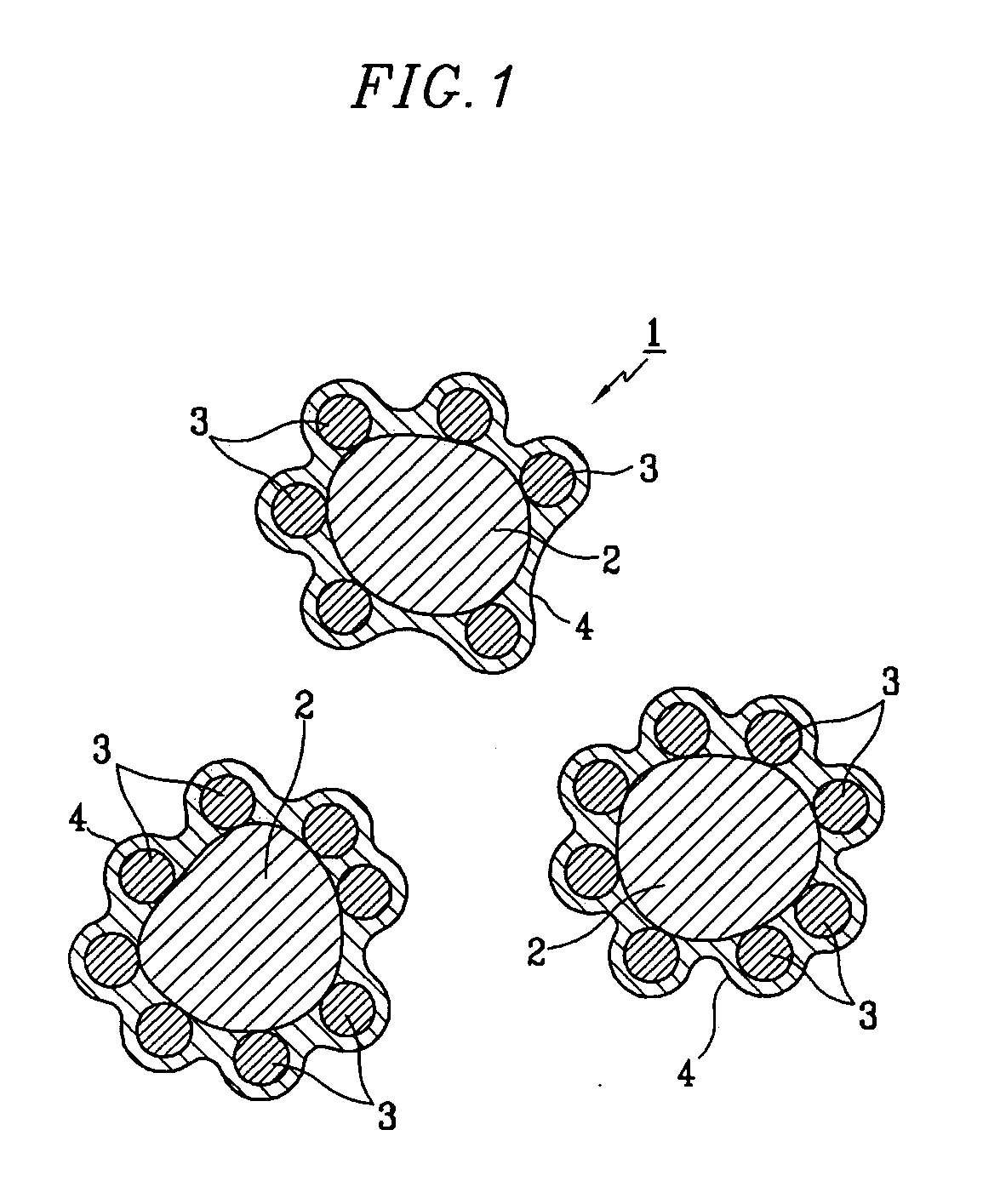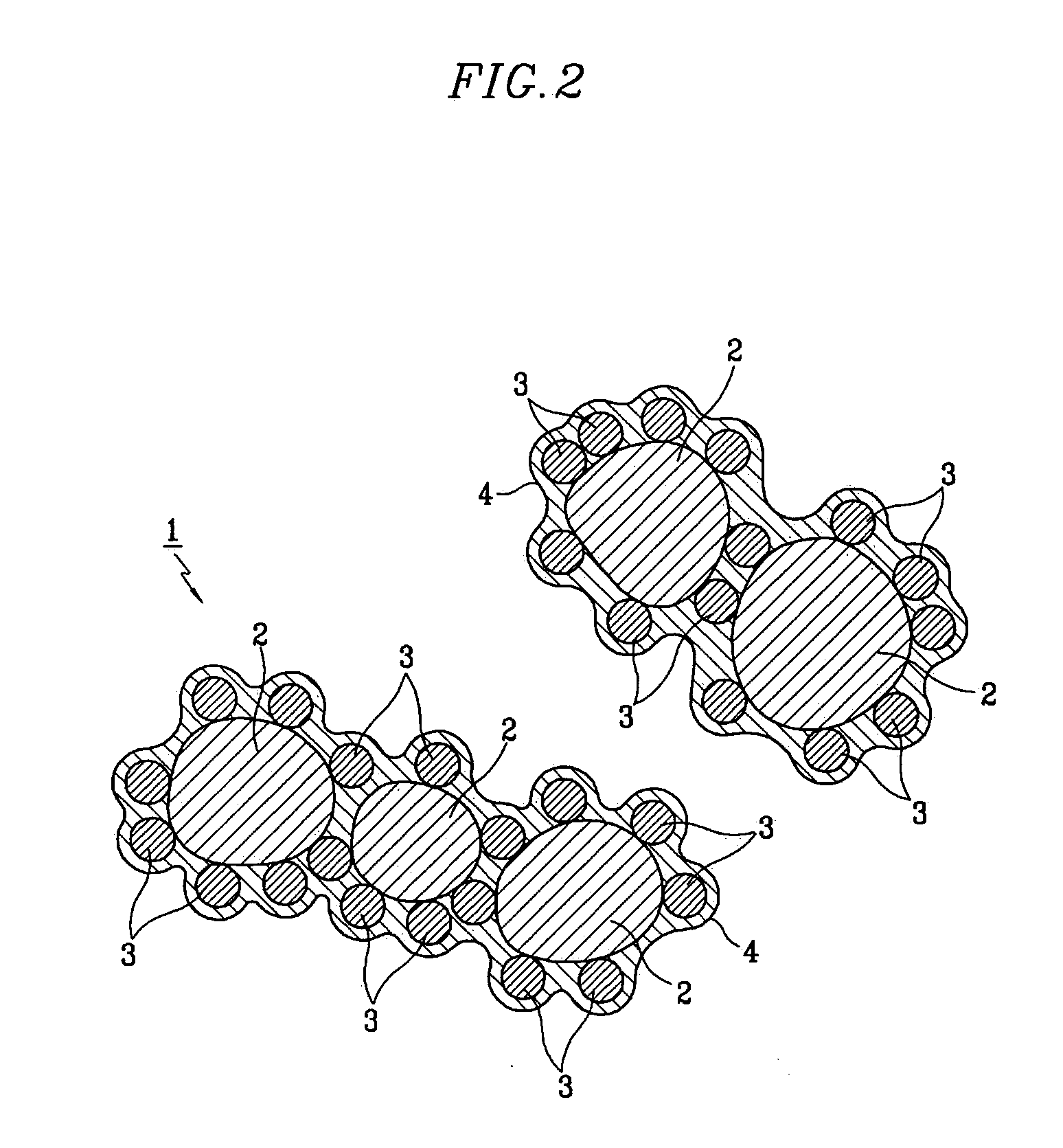Rechargeable lithium battery
a lithium battery, rechargeable technology, applied in the direction of non-aqueous electrolyte cells, cell components, electrochemical generators, etc., can solve the problems of significant deterioration of cycle characteristics, and achieve the effect of reducing hf generation and improving cycle characteristics
- Summary
- Abstract
- Description
- Claims
- Application Information
AI Technical Summary
Benefits of technology
Problems solved by technology
Method used
Image
Examples
experimental example 1
[0109] Lithium secondary battery cells including electrolytes having various additive components and their compositions were fabricated, and their cycle characteristics were estimated.
[0110] Battery cells were prepared as follows. Positive electrode slurry was prepared first by mixing a LiCoO2 positive active material having 10 μm average particle diameter, a binder of polyvinylidene fluoride, and a carbon powder conducting agent having 3 μm average particle diameter, and then by mixing with N-methyl-2-pyrrolidone. The positive electrode slurry was coated onto a current collector of 20 μm thick aluminum foil by doctor blade method, dried at 120° C. for 24 hours under vacuum atmosphere to volatilize N-methyl-2-pyrrolidone, and then pressed. An active mass including a positive active material was laminated with the current collector to fabricate a positive electrode.
[0111] Next, 2 parts by weight of Si particulate having 200 nm average particle diameter was mixed with 1 part by weig...
experimental example 2
[0127] A positive electrode and a negative electrode were fabricated using the same method as in Experimental Example 1.
[0128] Electrolytes of Examples 12 to 14 were prepared by adding 1.3M LiPF6 as a solute to a solvent of ethylenecarbonate (EC) and diethylcarbonate (DEC) mixed in a ratio of EC:DEC=30:70, and adding 5, 10, and 20 wt %, respectively, of silicone oil. The added silicone oil was the same as the silicone oil 2 of Experimental Example 1, where k=0, m=4, n=2, and R and Z=CH3 in the above formula 1.
[0129] Coin-type lithium secondary battery cells of Examples 12 to 14 were fabricated with the same method as in Experimental Example 1 using the positive electrode, negative electrode, and an electrolyte. Cycle characteristics of the obtained lithium secondary battery cells were estimated with the same method as in Experimental Example 1. The results are shown in FIG. 9. The electrolyte of the lithium secondary battery cell of Example 12 includes 5 wt % of silicone oil. The ...
experimental example 3
[0131] A positive electrode and a negative electrode were fabricated using the same method as in Experimental Example 1.
[0132] Electrolytes of Examples 15 to 17 were prepared by adding 1.3M LiPF6 as a solute to a solvent of ethylenecarbonate (EC) and diethylcarbonate (DEC) mixed in a ratio of EC:DEC=30:70, and adding 1 wt % of silicone oil.
[0133] The silicone oil of Example 15 was k=0, m=3, n=3, R and Z=CH3 in the structure of above formula 2. The silicone oil of Example 16 was k=0, m=3, n=6, R and Z=CH3 in the structure of above formula 3. The silicone oil of Example 17 was a silicone oil where k=0, m=3, n=4, and R and Z=CH3 in the above formula 3.
[0134] Coin-type lithium secondary battery cells of Examples 15 to 17 were fabricated using the same method as in Experimental Example 1 using the positive electrode, negative electrode, and an electrolyte. Cycle characteristics of the obtained lithium secondary battery cells were estimated with the same method as in Experimental Examp...
PUM
| Property | Measurement | Unit |
|---|---|---|
| interplanar spacing | aaaaa | aaaaa |
| particle diameter | aaaaa | aaaaa |
| interplanar spacing | aaaaa | aaaaa |
Abstract
Description
Claims
Application Information
 Login to View More
Login to View More - R&D
- Intellectual Property
- Life Sciences
- Materials
- Tech Scout
- Unparalleled Data Quality
- Higher Quality Content
- 60% Fewer Hallucinations
Browse by: Latest US Patents, China's latest patents, Technical Efficacy Thesaurus, Application Domain, Technology Topic, Popular Technical Reports.
© 2025 PatSnap. All rights reserved.Legal|Privacy policy|Modern Slavery Act Transparency Statement|Sitemap|About US| Contact US: help@patsnap.com



